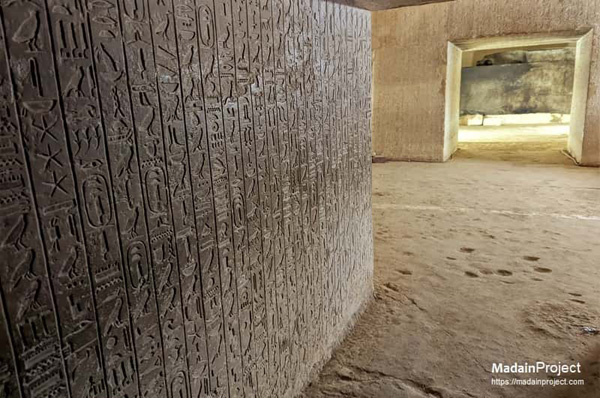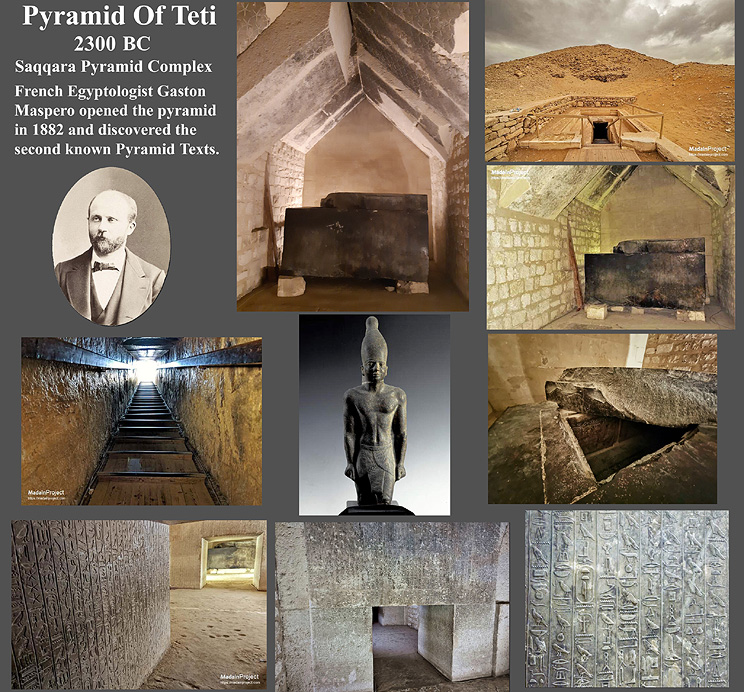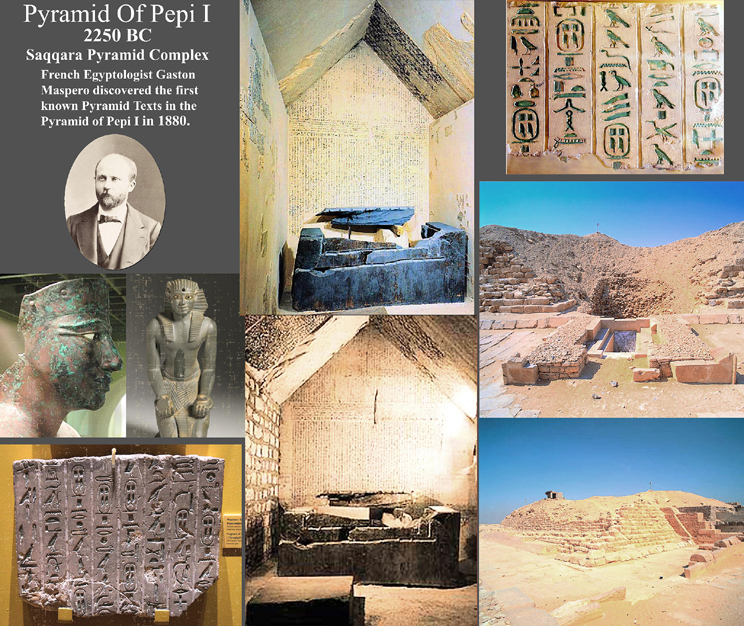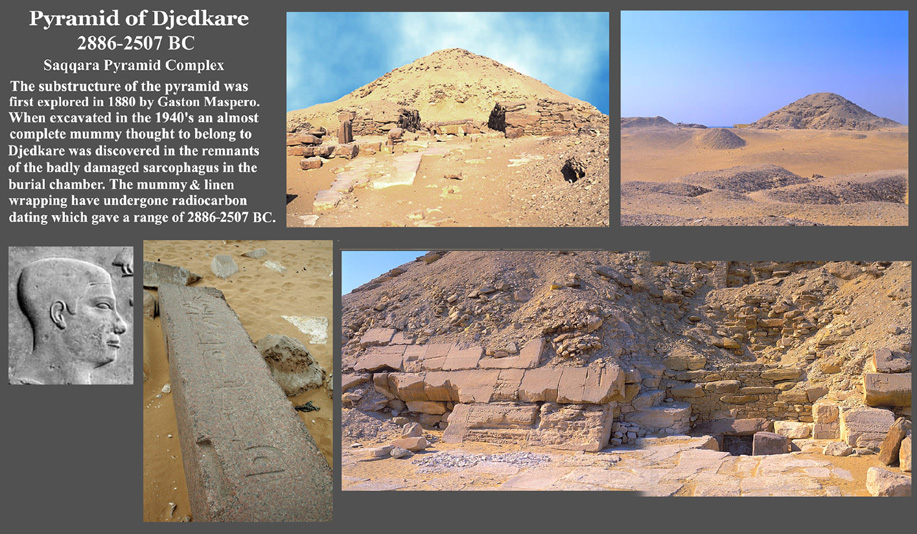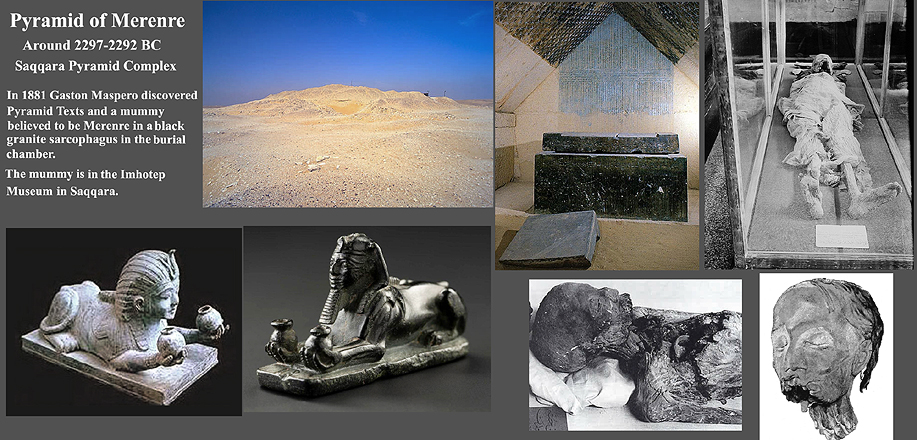Saqqara
Unas was the first pharaoh to have the Pyramid Texts carved and painted on the walls of the chambers of his pyramid, a major innovation that was followed by his successors until the First Intermediate Period (c.?2160 – c.?2050 BC).
The reopening of the Unas pyramid is part of a larger plan of the Egyptian Ministry of Antiquities to open more archaeological sites to attract tourists.
‘’We’re planning to make other sites at the Abusir necropolis accessible to the public, like the tomb of Vizier Ptahshepses, the pyramids of Sahura and Neferirkare,’’ said Sabry Farag, director of the Saqqara and Abusir necropolis sit

Saqqara
Pyramid of Teti poster full size
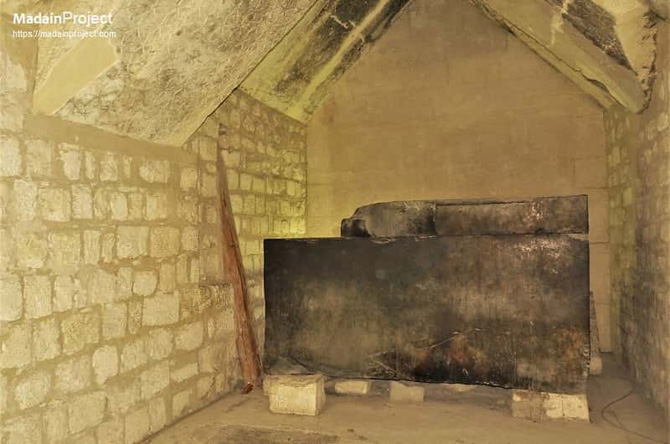
Saqqara
Saqqara
|
The basalt sarcophagus was badly destroyed when it was found, but enough fragments have been found to allow for its reconstruction. A niche for the canopic chest was sunk into the floor and concealed by a slab, which didn't prevent it from getting looted. None of the inner rooms of the pyramid appears to have been inscribed. In the burial chamber pieces of alabaster and a faience bead on a gold thread were discovered, as well as many fragments of what was originally a large sarcophagus of dark grey basalt. The sarcophagus was sunk into the floor of the burial chamber and there was a niche for the canopic chest of the king to its north-east. An almost complete mummy was discovered in the remnants of the sarcophagus. An examination by Ahmed Batrawi of these skeletal remains, excavated in the mid-1940s under the direction of Abdel-Salam Hussein, suggests that Djedkare died at the age of 50 to 60 years. Inside Djedkare Isesi's pyramid substructure, remains of the burial have been found alongside the mummy remains of Djedkare Isesi himself. The mummy and linen wrapping have undergone radiocarbon dating which have given a common range of 2886–2507 BC. The substructure has otherwise been badly damaged by stone thieves quarrying the Tura limestone casing. |
PYRAMID OF DJEDKARE POSTER FULL SIZE
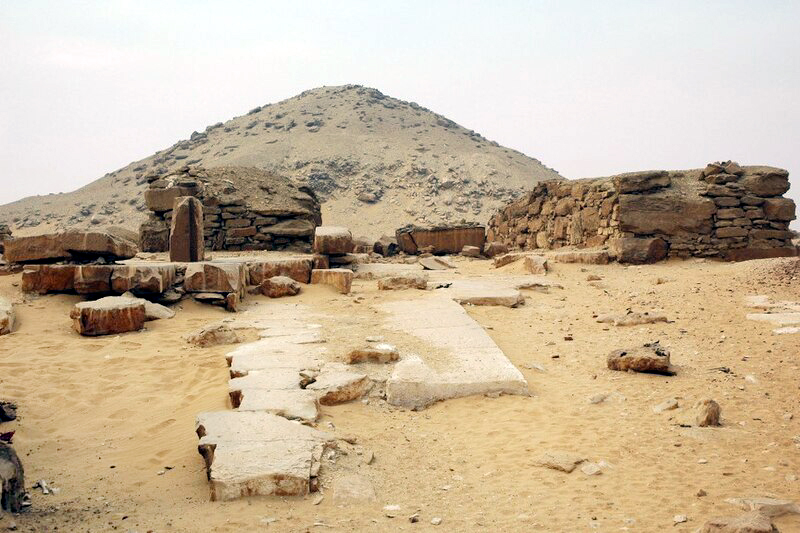
Saqqara
The burial chamber contained a black basalt sarcophagus, which was intact when it was discovered and even its lid, although pushed back, was mainly unbroken. The mummy that was discovered inside this sarcophagus is held by some to have been Merenre I himself, alhough it is more likely that it belonged to an 18th Dynasty intrusive burial.
Merenre was probably buried in his pyramid at South Saqqara though apparently because of his unexpected death this pyramid was not yet completed. Until fairly recently it was believed that the first ever mummy was that of Merenre I though in reality the mummy found in his pyramid may not have been that of Merenre. Nevertheless in 1997 excavations began at Hierakonopolis revealing a large predyanstic cemetery full of older mummies. However, if the mummy is indeed that of Merenre, it would remain the oldest know royal mummy.
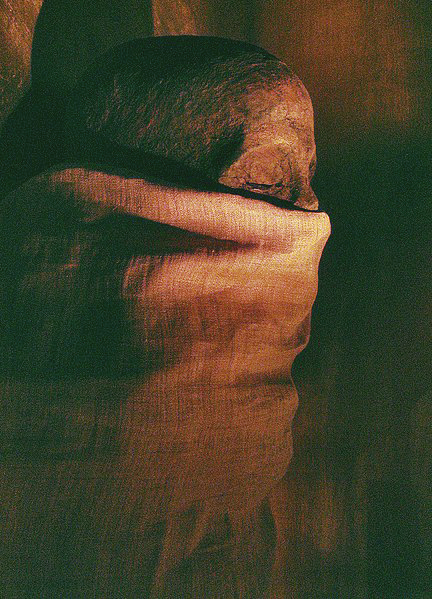
PYRAMID OFMERENRE POSTER FULL SIZE
In 1881 the Egyptologists Émile and Heinrich Karl Brugsch managed to enter the burial chamber of Merenre's pyramid via a robber's tunnel. They found its massive ceiling beams of limestone hanging dangerously as the lower retaining walls of the chamber had been removed by stone robbers. The black basalt sarcophagus was still intact, its lid pushed back, and in it lay the mummy of a 5.4 foot tall / 1.66 meter man. The mummy was in a poor condition because ancient tomb robbers had partially torn off its wrappings. The Brugsch brothers decided to transport the mummy to Cairo in order to show it to Auguste Mariette, head of the Egyptian Department of Antiquities and by then dying. During the transport the mummy suffered further damage: problems with the railroads prevented the mummy from being taken to Cairo by train and the Brugschs took the decision to carry it on foot. After the wooden sarcophagus employed to that end had become too heavy, they took out the mummy and broke it into two pieces. Parts of the mummy including the head remained in the Boulaq Cairo neighborhood until they were moved to the nearby Egyptian Museum. Émile Brugsch donated some of the rest, a collarbone, cervical vertebrae and a rib to the Egyptian Museum of Berlin. These have not been located since World War II.
Abusir
Died around 2458 BC
Abusir Pyramid of Neferefre info
Complex remains one of the best preserved of the Old Kingdom. In its substructure, excavators found fragments of a red granite sarcophagus and of Neferefre's mummy who was found to have died at around twenty to twenty-three years of age.
Archaeologists found very few contents within the tomb. The tomb was lined and sealed with pink granite. It contained parts of a pink sarcophagus, alabaster Canopic jars, alabaster offering containers and the remnants of a mummy. Upon investigation, archaeologists believe the mummy to be that of King Neferefre. He was probably between 20 to 23 years old at the time of death.
While exploring
ruins of the mortuary complex Czech archeological mission discovered
among others papyri of temple accounts, statues of the king,
decorated plates and many seal prints. In 1980, Czech archaeologists
found five small fragments of human bones in the eastern half
of the burial chamber. Survey have shown that these are the remains
of a man aged 20-23, probably pharaoh Neferefre and fragments
of a red granite sarcophagus.
The oldest would appear to be the Old Kingdom pharaoh Neferefre (5th dynasty) who is estimated to have died around 2458 BC. When found the tomb was lined and sealed with pink granite. It contained parts of a pink sarcophagus, alabaster Canopic jars, alabaster offering containers and the remnants of a mummy.
Few traces remain of the king's funerary equipment: some fragments of a red granite sarcophagus, fragments of alabaster canopic jars and some skeletal fragments of the king's mummy, including his left hand. From the few remains of his body, it has been determined that the king died at the age of about 22 or 23 years old.
Today the pyramid appears as a low mound just south of the pyramid of Neferirkare. He was the eldest son of pharaoh Neferirkare
The large number of papyri, frit tables and faience ornaments found within the temple’s storage magazines more than doubled the number of documents dating to the Old Kingdom.
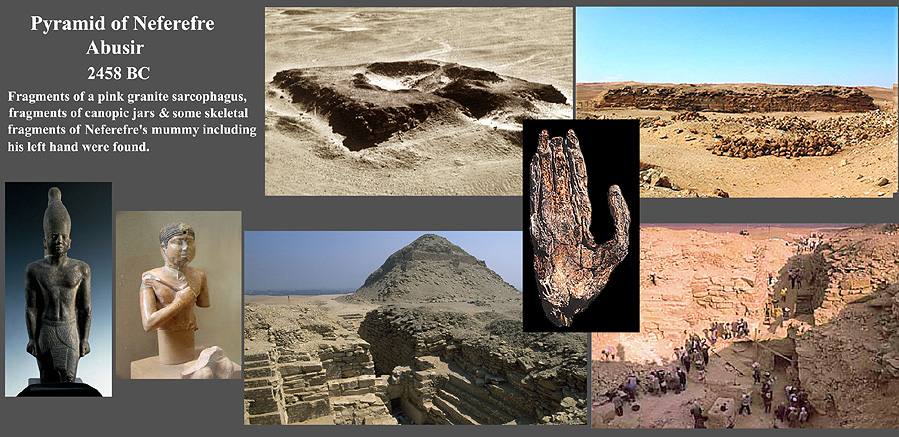
Abusir
The pyramid of Sahure is a pyramid complex built in the late 26th to 25th century BC for the Egyptian pharaoh Sahure of the Fifth Dynasty. It introduced a period of pyramid building by Sahure's successors in Abusir, on a location earlier used by Userkaf for his sun temple.
Stone fragments believed to belong to the king's basalt sarcophagus are the only remains of the burial that have been found.
Inside the apartment's ruins, Perring found stone fragments - constituting the only discovered remains of the burial - which he believed belonged to the king's basalt sarcophagus.
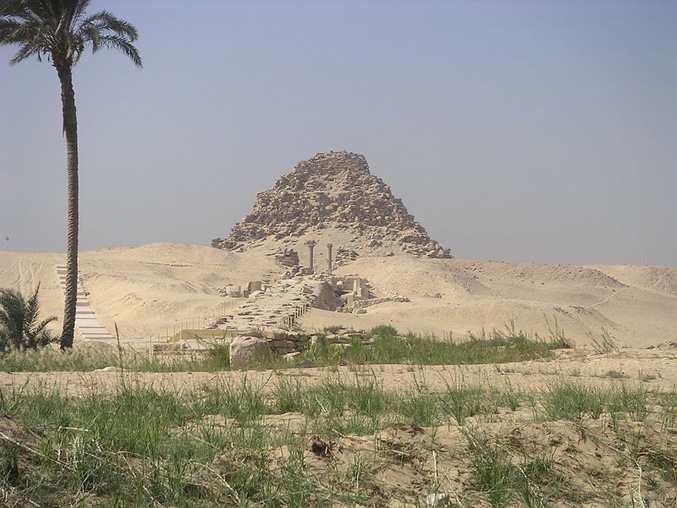
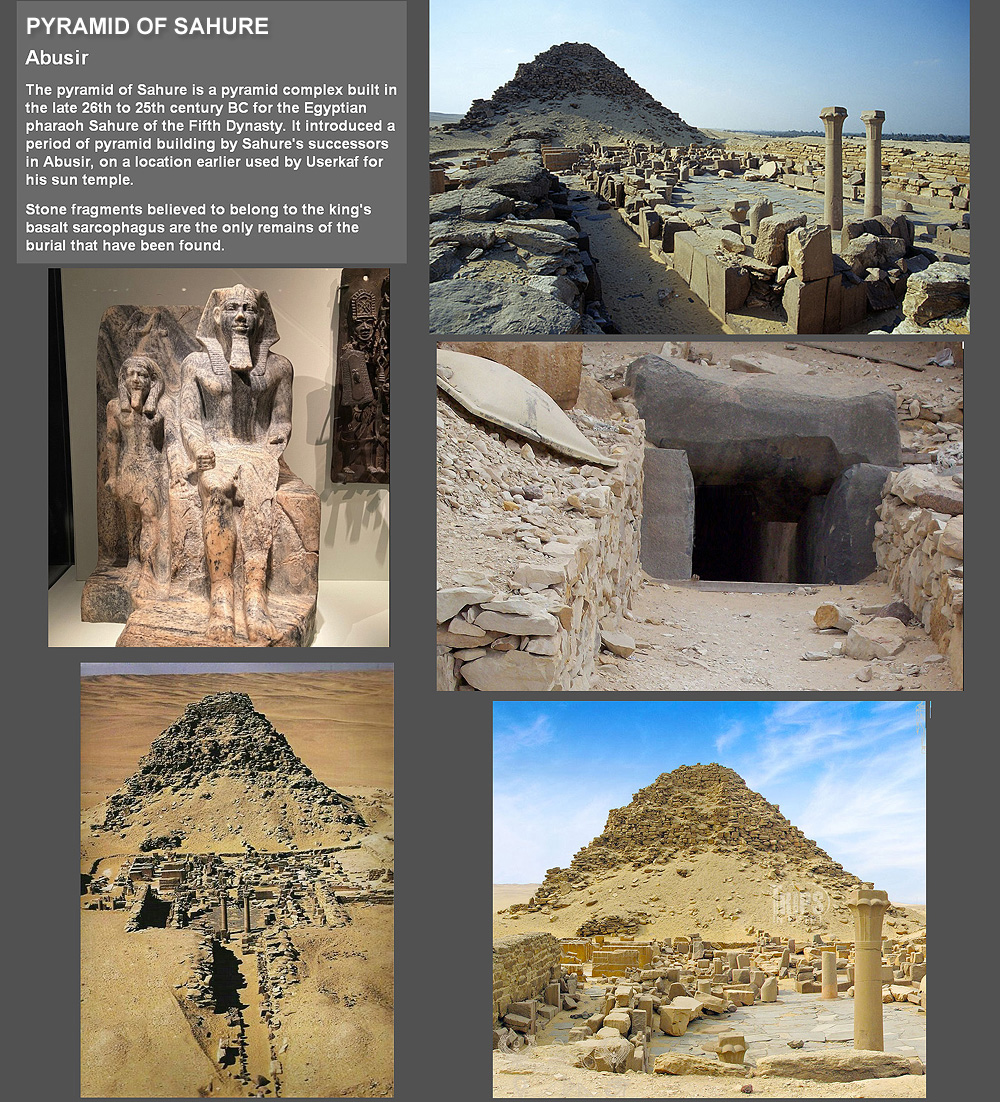
Abusir
Neferirkare Kakai, Third King of the Old Kingdom 5th Dynasty
The substructure is badly damaged: the collapse of a layer of the limestone beams has covered the burial chamber. No trace of the mummy, sarcophagus or any burial equipment has been found inside. The severity of the damage to the substructure prevents further excavation.
Papyrus found in his pyramid complex were written in ink and are the earliest known documents in hieratic script, a cursive form of hieroglyphics.
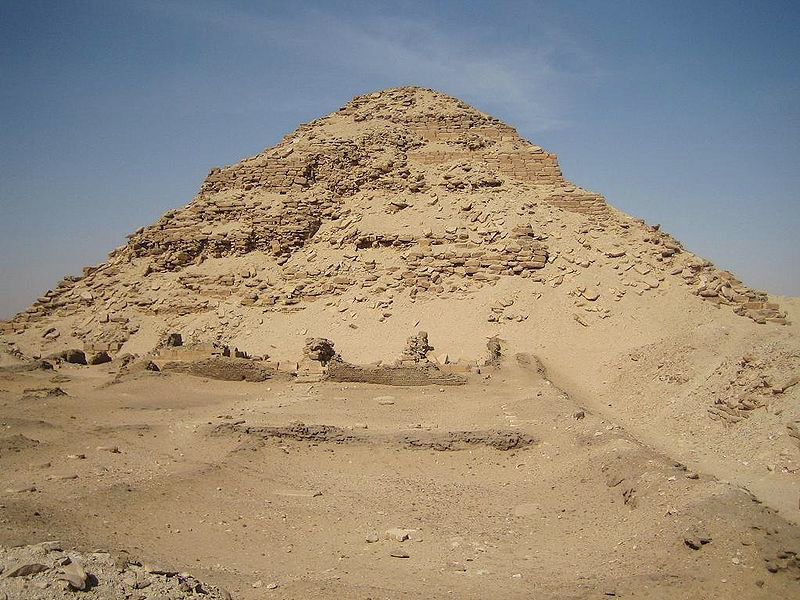
This pyramid was built by Sesostris II
The Granite Box in the Pyramid at Lahun (Part 1)
Oddities Within The Lahun Pyramid
|
The burial chamber continues along the axis of the antechamber. Clad entirely in granite and with a garbled roof, it measures 5 by 3 metres and is 3 metres high. The red granite sarcophagus was placed at the far end of the burial chamber. A small chamber opens to the south of the burial chamber. It is here that the only remains of the burial were found: a golden uraeus that once adorned the king's head and some leg bones, perhaps the king's. |

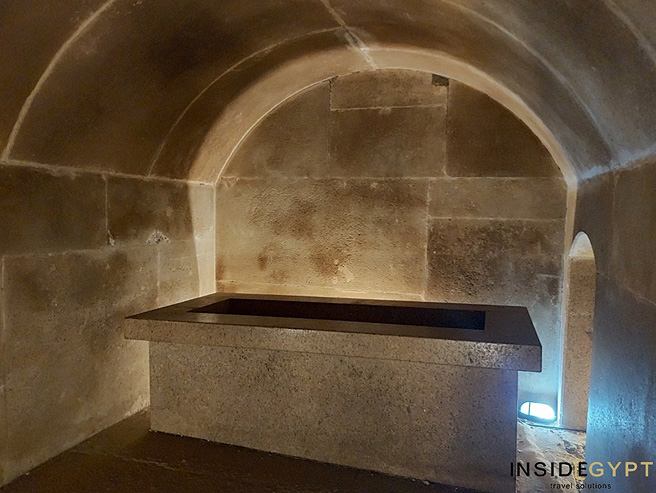
PYRAMID OF MENKAUHOR
Saqqara
The identity of the pyramid owner is unclear though it is suspected to belong to either Pharaoh Menkauhor of the Fifth Dynasty or Pharaoh Merikare of the Tenth Dynasty, both of whom are known to have built a pyramid
It's substructure was thoroughly investigated between 2005 and 2008 by a team of archaeologists led by Zahi Hawass. Their findings included lowered portcullis gates indicating a burial had taken place, a sarcophagus lid built of schist and holes cut into the burial chamber floor presumed to have held canopic jars.
Inside the burial chamber, the intact lid of a sarcophagus made of grey schist was uncovered. The lid measured 8.7 feet/ 2.65 meters by 3.6 feet/1.09 m and was found covering holes cut in the floor presumed to have held canopic jars.
Menkauhor's
"Headless Pyramid"
North Saqqara
The completely destroyed pyramid in North Saqqara, which lies on the farthest edge of the desert plateau east of Teti's mortuary temple, is sometimes attributed to Menkauhor. Local people named its "Headless Pyramid". In the rubble of the pit for the burial chamber Maspero found fragments of pink granite and even a sarcophagus lid of bluish gray stone.
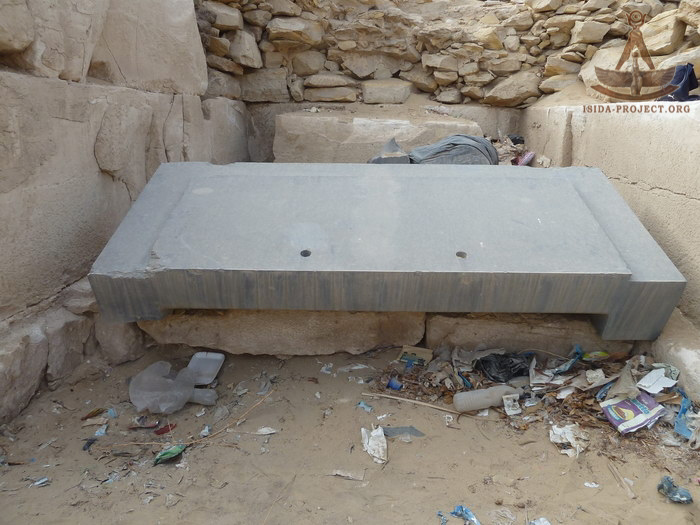
Pyramid of Weserkaf's burial chamber includes a basalt sarcophagus
The burial chamber was made of granite, which was plastered with gypsum. The granite sarcophagus stood to the west, while the canopic chest was stored in a niche in the south of the burial chamber. The burial chamber was found empty without any trace of a burial. It is not certain that the king was actually buried here.
On the west side of the burial chamber is a false door and a huge granite block on which once stood the sarcophagus of the king.
Hawara
|
The sandstone sarcophagus was set into the floor against the west wall. When Petrie examined the sarcophagus in Amenemhet's burial chamber, he discovered the remains of a burned inner coffin. It is believed that the coffin was damaged by ancient grave-robbers. |
The pyramid's interior features a network of passageways, chambers, and corridors adorned with intricate hieroglyphic inscriptions and reliefs. These inscriptions provide valuable clues about ancient religious practices, burial rituals and the pharaoh's journey to the afterlife. Archaeological excavations within the pyramid have uncovered artifacts including funerary objects and human remains, shedding further light on ancient Egyptian culture and customs.
Sekhemkhet's pyramid is sometimes referred to as the "Buried Pyramid" and was first excavated in 1952 by Egyptian archaeologist Zakaria Goneim. A sealed sarcophagus was discovered beneath the pyramid, but when opened was found to be empty.
The burial chamber was left unfinished but surprisingly a nearly completely arranged burial was found. The sarcophagus in the midst of the chamber is made of polished alabaster and shows an unusual feature: its opening lies on the front side and is sealed by a sliding door which was still plastered with mortar when the sarcophagus was found. The sarcophagus was empty however and it remains unclear whether the site was ransacked after burial or whether King Sekhemkhet was buried elsewhere.
The unfinished pyramid of Zoser’s successor Sekhemkhet (2648–2640 BC) is closed to the public because of its dangerous condition. An unused travertine sarcophagus was found in the sealed burial chamber, and a quantity of gold and jewellery and a child’s body were discovered in the south tomb. Recent surveys have also revealed another mysterious large complex to the west of Sekhemkhet’s enclosure, but this remains unexcavated.
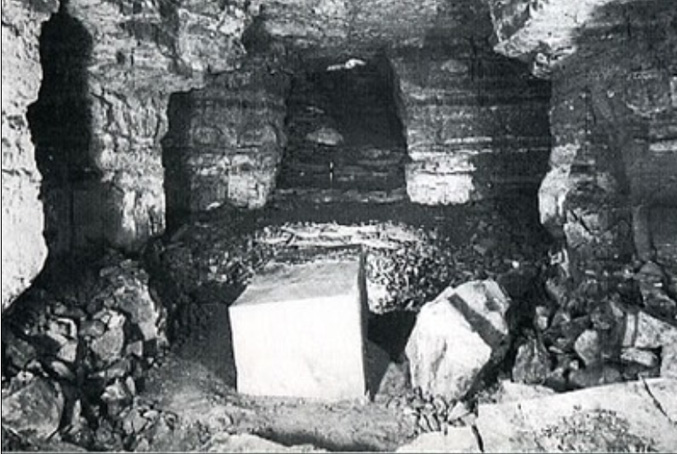
|
Mysterious sarcophagus of Sekhemkhet said to have been carved from one solid block of ‘Egyptian alabaster’ with sliding door. Dated from 2649 – 2643 BC "In the middle of a rough-cut chamber lay a magnificent sarcophagus of pale golden, translucent alabaster" under the Sekhemkhet Pyramid at Saqqara.” The only opening was sliding panel at one end, slid into position from the top. When found in 1954 the box was completely sealed--and no body was found inside. The pyramid was so named because they found the title "Sekhemkhet" on the lids of jars found at the same location. |
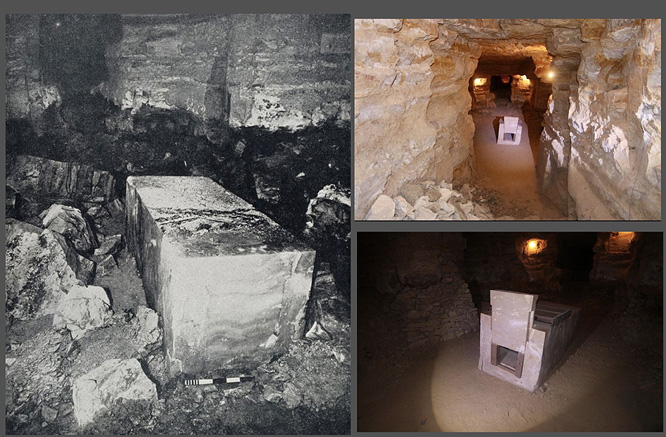
Pyramid "Lepsius No.24"
Abusir
In the ruins of the burial chamber, amid the remains of the pink granite sarcophagus and bits of rubble from the pyramid core, and fragments of the burial equipment, the damaged mummy of a woman about 23 years old was found. The archeological circumstances indicate that it may be the mummy of the pyramid's processor. However, her name was not found anywhere in the ruins. Since there can be no doubt that the tomb dates from Neweserre's time, she was probably either his consort or his brother - Neferefre's.
